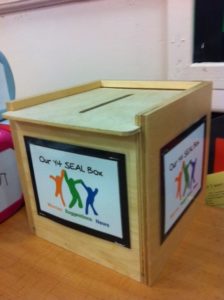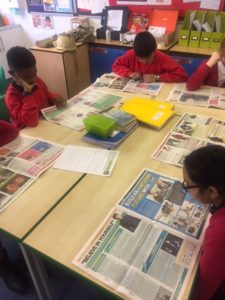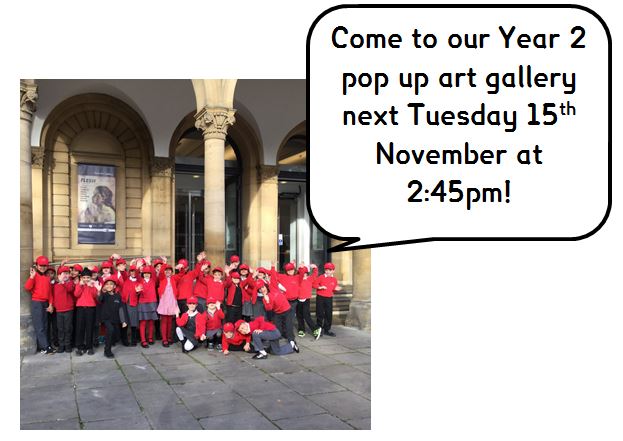11 November 2016
The homework this week is practice makes perfect.
As we’re coming to the end of our Class Novel Big Topic about the Katie and… books, we’d like the children to write a letter or email to James Mayhew, the author of the stories.
You could tell him about the learning we’ve done in the topic; what you thought about his stories and which one was your favourite; you could suggest a plot for a new Katie book; you could ask him questions.
If you’d like to send an email, you can email it to y2@moortown.leeds.sch.uk.
11 November 2016
This week’s spelling activity focuses on the use of apostrophes for possession (Anna‘s brother) and for contraction/omission (I don‘t want to).
Each child has been given a sheet to help them practise using apostrophes correctly. Children should complete the activities by Thursday 17 November 2016.
11 November 2016
We have two pieces of homework this week, both due on Thursday 17 October 2016.
The first is Creative:
I can show why I love reading.
In Year 5, we always talk about having a ‘love of reading‘. This homework is a celebration of this. We’ve discussed some ideas as a class and here’s what we came up with. You could:
- interview members of your family about their passion for reading
- turn your favourite book into a short movie
- create a trailer for the film version of a book
- cook a recipe from your favourite recipe book
- write part of the prequel/sequel to your favourite book
- create a poster to advertise your favourite book
- create a fake interview with your favourite author
And, many more…
The second homework is Mathletics:
You have been assigned two activities:
- Multiply 2 digit numbers, regroup
- Long Multiplication
11 November 2016
This week’s homework is Practice Makes Perfect and is due on Thursday 17 November.
To be able to compare and contrast.
The children have brought home some poems we’ve looked at this week. One of the skills we’re working on is comparing and contrasting. Choose two poems. Compare and contrast them. (3 marks)
- 3 marks means mention 3 things
- Name the poem you are referring to
- If you mention a difference, discuss both poems (and make sure it’s a comparison and not just two random differences)
- Give some examples of what you mean eg. they’re both informal: ‘hiya’ is used in (a) and ‘wassup’ is use din (b)
- Don’t be too obvious (I know they’re both poems)
Then, choose any two texts (newspaper, story, magazine, comic, info book) and answer the same 3 marks question, comparing and contrasting them.
11 November 2016
This week, you have been assigned three Mathletics tasks.
Fractions
- Comparing fractions 2
- Ordering fractions 1
- Simplifying fractions
These are all skills we’ve learnt in class for the last two weeks so children should be able to complete them independently. Check, using the ?, what the activity is asking you to do. If you make any mistakes, always go back and look at that question again to see if you know where you went wrong or whether you need to check with an adult.
These tasks need to be completed by Thursday 17 November.
11 November 2016
This week’s spelling activity is all about homonyms.
Read the chapter from Ann M. Martin’s ‘How to look for a lost dog’ which is all about homonyms. Rose (the main character) loves homonyms which include homophones and homographs.
- Homophones are words which sound (hence, ‘phone’) the same but are spelt differently: their, there, they’re.
- Homographs are words that are spelt the same (hence, ‘graph’, as in autograph) but sound different: to bow, the bow and arrow.
Rose creates lists of homonyms because she really likes them. How many groups of homonyms can you (ewe) create and can you (yew) then use them correctly in (inn) sentences. I wonder whether you can write a sentence with the whole (hole) group of homonyms in it?
Challenge – Rose can only think of one group of four homonyms. Can you think what that is? (Check Rose’s rules for homonyms in the chapter.)
‘Power for good’
Next week is national Anti-Bullying Week.

The theme this year is ‘Power for Good‘ with the following key aims:
- To support children and young people to use their Power for Good – by understanding the ways in which they are powerful and encouraging individual and collective action to stop bullying and create the best world possible.
- To help parents and carers to use their Power for Good – through supporting children with issues relating to bullying and working together with schools to stop bullying.
- To encourage all teachers, school support staff and youth workers to use their Power for Good– by valuing the difference they can make in a child’s life, and taking individual and collective action to prevent bullying and create safe environments where children can thrive.
Our school definition has recently been reviewed by the School Council and remains unchanged.
‘Bullying is when you hurt someone, physically or emotionally, several times on purpose.’
We also encourage children to use their ‘Power for Good’, if they were to experience or witness bullying, by using another STOP message, start telling other people.
In class, children will discuss these aspects of bullying:
- Our definition of bullying (above)
- Types of bullying – cyber-bullying and prejudice-based bullying related to gender, sexual orientation, race, religion and belief, special educational need and disability
- What to do if children experience bullying. The key message is to tell someone (start telling other people)
Recently the School Council responded to this question, ‘What would you do if you were bullied‘?
- ‘Start telling other people – tell someone who I trust and who I can talk to.’
- ‘I would tell someone I trust (family member, member of staff or friend).’
- ‘If I were bullied, I’d tell my parents, a friend, a teacher and if nothing changed I would phone ChildLine (08001111).’
- ‘I’d tell a teacher, maybe a friend and put in a worry in the ‘worry box’. Also, I’d tell a parent.’
- ‘I would tell anyone I trust: my friends, my mum or dad or a member of staff. They could sort it straight away.’
- ‘I’d tell my mummy and daddy.’
All classes have access to their class SEAL box or a whole school worry box where they can tell an adult any concerns about bullying or any other issues.

For further support, bullying resources can be found at…
- http://www.anti-bullyingalliance.org.uk/resources/disablist-bullying/resources-for-parents/
- http://www.childline.org.uk/explore/bullying/pages/bullying.aspx
- http://www.bullying.co.uk/advice-for-parents/
- http://www.youngminds.org.uk/for_parents/worried_about_your_child/bullying
Our noses are often in the paper
Year 6 enjoy a range of reading opportunities and one of our favourites is our weekly fix of First News.

We’re always keen to share interesting articles with each other and this brilliant paper never fails to disappoint. This week there was a man who’s best friend was a bear; a heart-warming story about a little girl who’s life had been improved by the efforts of WaterAid; and a funny little snippet on a ‘Petmiere’ – cinema for dogs!
We always read FirstNews on a Monday so ask your child at home what interesting articles (s)he’s read each week.
What are the 8Rs?
Year 6 have had a good start to this half term. We’re working on the 8Rs (resilience, safe risk-taking, responsibility, resourcefulness, responding, remembering, reflecting, readiness) to improve our learning behaviour, and therefore our learning, in class. These Rs are easy to apply at home, too:
- Resilience – try a new skill and keep at it if it’s hard
- safe Risk-taking – cook with an adult, using knives and other equipment
- Responsibility – be in charge of getting your own things ready for school or getting yourself up in the morning
- Responding – if an adult praises you for an action, make sure you do it again (or don’t do something again if you’ve been told about it before)
- Readiness – be ready to go if you’re heading out for the day with everything you might need
It’d be great to hear of any particularly good examples of children practising the 8Rs at home.
Moortown’s artists
We’d love to see you next Tuesday to share our learning from our Katie and…topic. Art gallery open 2:45-3:30pm.
